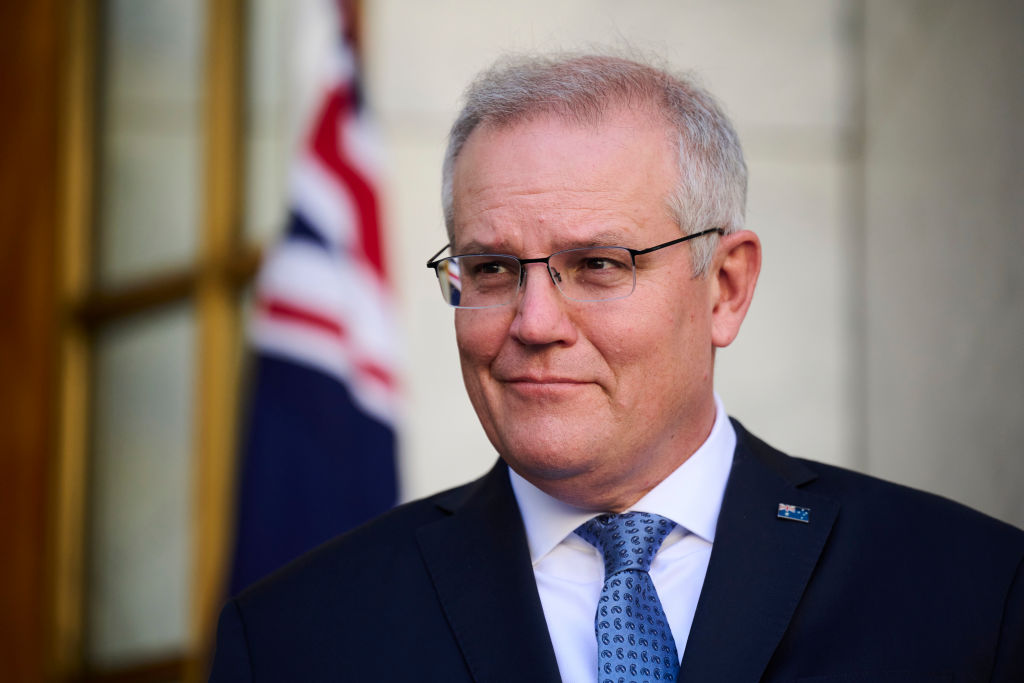Green Energy: Feds tip an extra $150m into Australia’s hydrogen economy

Picture: Rohan Thomson/Getty Images News via Getty Images.
More funds coming for hydrogen economy
Hydrogen is in the money right now if you’re a government looking for a big ticket green energy investment.
And Scott Morrison himself has rolled out for an announcement on another $150 million commitment to the emerging space.
The Morrison government said it will tip $1.2 billion into its hydrogen strategy, although the Feds have been criticised in some quarters for not going far enough.
Germany for instance committed US$10 billion in May to helping build large scale renewable hydrogen projects.
The funding will facilitate having a further two locations under the Clean Hydrogen Industrial Hubs program, taking it up to seven sites.
Those locations include Bell Bay in Tasmania, Darwin, South Australia’s Eyre Peninsula, Gladstone in Queensland, the Latrobe and Hunter Valleys in Victoria and New South Wales and the mining hub of the Pilbara in WA’s north.
The idea is to co-locate projects to optimise and spread investments in infrastructure.
“Our plan to invest and develop low emissions industries will mean more jobs for Australian workers, particularly in our regions, cheaper energy for businesses and lower emissions,” PM Scott Morrison said, as he rehashed his ‘technology not taxes’ line.
“We are accelerating the development of our Australian hydrogen industry and it is our ambition to produce the cheapest clean hydrogen in the world, transforming our transport, energy, resources and manufacturing sectors.”
While its maths feels a little confusing, the Government says the $464 million grant program provides up to $3 million grants for project consortia to progress feasibility and design work, and up to $70 million towards the roll-out of projects.
Energy and Emissions Reduction minister Angus Taylor says Australia’s hydrogen industry could be worth $11 billion by 2050 and generate 8000 jobs.
But what kind of hydrogen is in play is part of the question, with an ongoing conflict between the Morrison Government’s use of the phrase ‘clean hydrogen’ and the beliefs of green hydrogen proponents like Andrew Forrest, who say only hydrogen clearly made with 100% renewable energy should be acceptable.
Battery recycling scheme seeks partners
Batteries have been earmarked as the future of energy, but energy storage continues to create an environmental conundrum for smaller, more conventional household batteries, with about 90% going into landfill every year.
That not only causes issues with waste storage and toxicity, but with base metals inventories and production on the decline, also means we’re sending a valuable supply of raw materials to landfill.
The Federal Government and Battery Stewardship Council are now seeking partners to expand of its industry stewardship scheme, which will launch in January next year.
The launch of the scheme, B-Cycle, will see a number of public drop-off stations in retail locations established to increase the amount of batteries diverted from landfill and battery materials recycled back into the supply chain.
“As waste batteries, especially those used in small handheld devices, are one of the fastest growing waste streams, this industry-led scheme will play an essential role in significantly increasing Australia’s battery collections and recycling, and help our circular economy grow,” assistant minister for waste reduction Trevor Evans said.
“But it will only work if industry plays its part.”
“We must all work together toward Australian consumers soon being able to safely and responsibly manage all types of used batteries at their end-of-life.”
B-Cycle CEO Libby Chaplin said the scheme would feature ‘robust traceability’.
“It’s crucial Australia’s battery importers, collectors and recyclers sign up now and become accredited participants to take full advantage of the launch,” she said.
The launch of industry stewardship schemes has seen some frictions emerge between the Federal Government and the business sector, with Environment Minister Sussan Ley using a National Press Club talk to “put the solar industry on notice” over a waste recycling scheme.
She has given the solar industry a June 2022 deadline to come up with a plan, but her declaration also exposed Ley to accusations of grandstanding, with the Clean Energy Council saying it had put forward proposals which had been ignored by Canberra.
Related Topics

UNLOCK INSIGHTS
Discover the untold stories of emerging ASX stocks.
Daily news and expert analysis, it's free to subscribe.
By proceeding, you confirm you understand that we handle personal information in accordance with our Privacy Policy.








